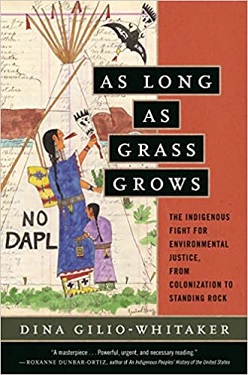Synopsis
The book gives a history of Native Americans in the United States from European colonization to the modern day, with the topic of the environment in focus. The European invasion that began in 1492 led to the deaths of 99% of Native Americans from diseases brought to the land, wars and starvation, including through forced displacements like the Trail of Tears. Many American settlers believed in "manifest destiny"—that they had a moral duty to colonize across the Americas—and they enforced concepts of land ownership and usage that were at odds with Native American culture.
Gilio-Whitaker contends that in the modern era, the American legal system prevents indigenous Americans from self-organization and governance in areas like environmental stewardship, economics and social justice. She criticizes the views of Henry David Thoreau and John Muir on Native Americans, and that the conservation movement which arose from their ideology saw the wilderness as a place that indigenous people needed to be excluded from; meanwhile, toxic waste was disposed of in locations where it would harm communities of color. By establishing national parks in places like Yosemite, the native stewards of the area were excluded from it.
The book covers concepts of gender among Native American groups, some of whom had matrilineal power structures and different conceptions of gender identity and the role of family to settlers. Early feminists would be inspired by the Iroquois confederacy's Clan Mother roles. However, the imposition of Christianity erased many of these values.
Gilio-Whitaker explores the Dakota Access Pipeline protests at Standing Rock in 2016 and 2017, where an oil pipeline was approved to pass through sacred ground. Construction was completed, despite the protests and anticipated threats to the region's water and environment. Using the United Nations's Declaration on the Rights of Indigenous Peoples and state and local approaches in California, Gilio-Whitaker argues that federal laws like the American Indian Religious Freedom Act should be extended to protect sites of cultural significance to Native Americans, such as Panhe for the Acjachemen people. She advocates decolonization and community organizing. [1] [3] [4]
This page is based on this
Wikipedia article Text is available under the
CC BY-SA 4.0 license; additional terms may apply.
Images, videos and audio are available under their respective licenses.
